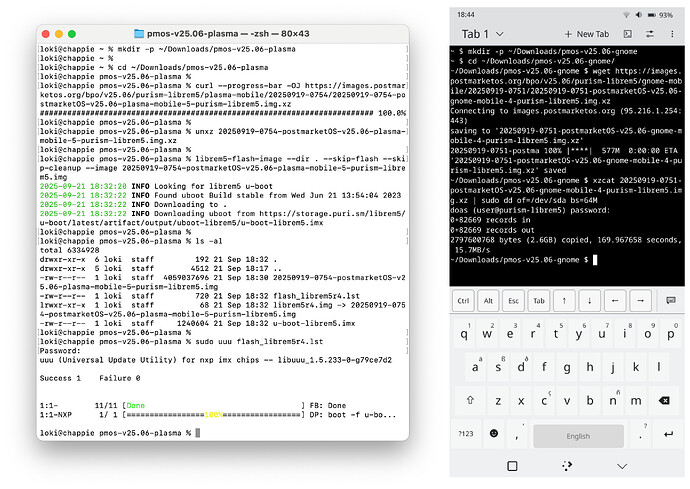Last night I got PostmarketOS running Plasma Mobile Working on my Librem 5. I,ve always liked KDE’s more vibrant shiny icons, desktop backgrounds, and selection of many KDE apps. I’ve got a real Desktop again now, instead of only an app drawer. The polished, finished look makes it look and function much like my Samsung phone now. Unless I run in to some problems with it now (which I don’t anticipate), I can’t see a reason to ever go back to PureOS. And everything feels very solid and just works, no bugs and no patches needed.
Several other previous attempts at getting this working failed. The best I could get was an installation to the SD card that would not boot. The instructions on postmarketos.org website said that for most installations of postmarketos, the use of pmbootstrap weren’t needed. Then it gives instructions using a terminal window that don’t involve pmbootstrap and that don’t work. You will not only need pmbootstrap, but you’ll need an obscure, hard to find version of it. Version 3.10 wouldn’t work. Adding the python-3 tomli patch didn’t help either. I found a deb file on a bleeding-edge repository in Debian’s archives. I needed v3.4 or higher and found v3.5.2 on a website that I probably couldn’t find again now. The AI actually found it for me. Once you get pmbootsteap v3.4 or higher installed to your linux PC and verified, you’re on the right path.
There are about a dozen or so options when you specify to pmbootstrap what you want. I remember specifying the Librem 5 and Plasma Mobile, amongst several other choices. After building the image, you start the installation. I had an SD card waiting, plugged in via usb. I was all ready to select /dev/sdb at the appropriate time and knew that the pc could read the SD card because I had tested it. Pmbotstrap stayed hung-up on scanning for a USB device as I tried several times mounting and unmounting the SD card. The scanning for a usb device just kept going without discovering the SD card. So finally, I unplugged the SD card and plugged the Libem 5 in to the same usb port. Immediately, the scanning discovered the Librem 5 and started uploading to the eMMC. In retrospect, I am glad it worked out that way. I might install PureOS to an SD card later.
Up until now, I’ve always gone on to this forum using my older Samsung phone, because my Librem 5 always felt more like a science experiment than a daily driver. I am using my Librem 5 now though. I am pretty sure now that my Libem 5 is already my daily driver now with the apps I have opened and tested already.
